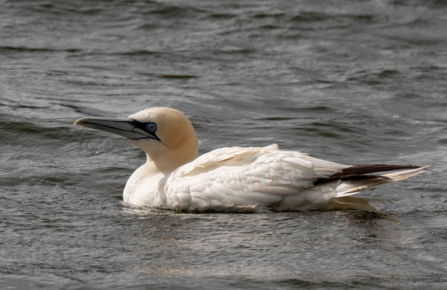What is a Gannet?
One of our largest seabirds, gannets feed on fish, which they catch by diving head-first into the sea, their wings folded right back.
Gannets nests on coastal cliffs around the north of the UK, sometimes in large colonies like those on some Scottish islands, and at sites in Wales, North East England and the Channel Islands.
So what is it doing here?
Due to the strength of the winds from Storm Francis this week, the Gannet has been picked up in the gusts and moved away from its usual resting spot.
According to the experts at infocus: "Sea birds such as gannets can be weak. Having been blown from their usual place, they would have seen the calm waters at Brockholes on Number 1 Pit Lake and thought 'phew, I'll rest here for a while'."


